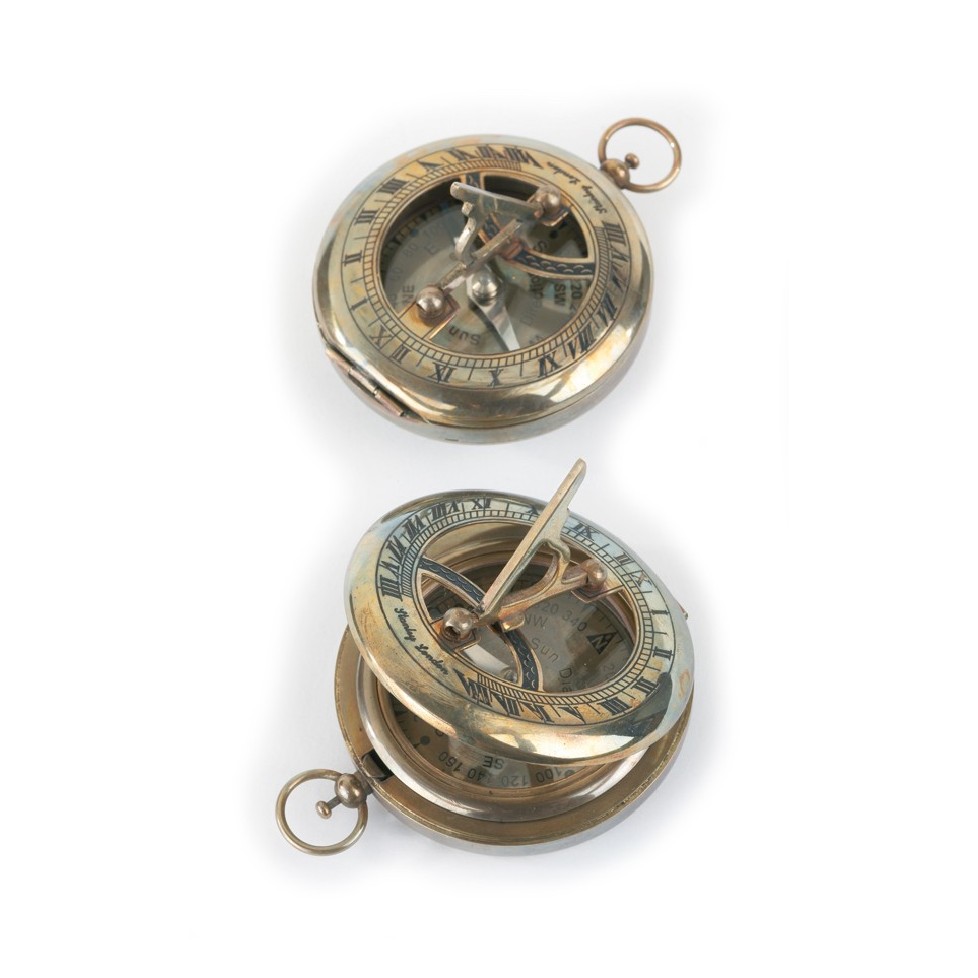

| Los pedidos realizados el día 25 de Julio, se procesarán el día 26 por fiesta local. |


Reproduction of a compass-sundial in brass of the type that Christopher Columbus would have used.
Reproduction of a compass-sundial in brass of the type that Christopher Columbus would have used.
The compass opened the world of exploration and discoveries. In the 13th century BC, the Chinese already used the principle of the magnetic needle. Used for the first time by feng shui priests to indicate where and how to build. The Chinese sailors adapt it to navigation, towards the year 1000, in order to keep the course. The Arabs perfect it by mounting it on an axis. It arrives in Europe between the 10th and 11th centuries, allowing navigators to cross the oceans and explorers to discover the continents. The first instrument that resembles the one that currently exists is due to the Portuguese Ferrande (1483).
Sextant in old brass with a leather case and screen-printed glass lid.
This elegant IMEX Marine clock is made with metal and wood.
Antiqued brass compass with a box of rosewood and glass.
High-precision moonphase watch from the prestigious IMEX Marine brand. Clear acrylic frame. Made in Spain. 1 year warranty. 13.6x136x3 cm.
IMEX MARINE tide indicator, a great benchmark in quality measurement devices. With a single glance, this elegant tide indicator IMEX offers you the hour and the level of the tides throughout the year. Once you receive the instrument, adjust it to the tide times of the place where you are during the full moon. The tide indicator only needs to be adjusted...
Elegant nautical-inspired compass made of zinc alloy. Its lid is decorated with an intricate design and the bottom has a compass rose printed on it. This nautical piece is an original gift idea, an instrument with which directions were determined at open sea.